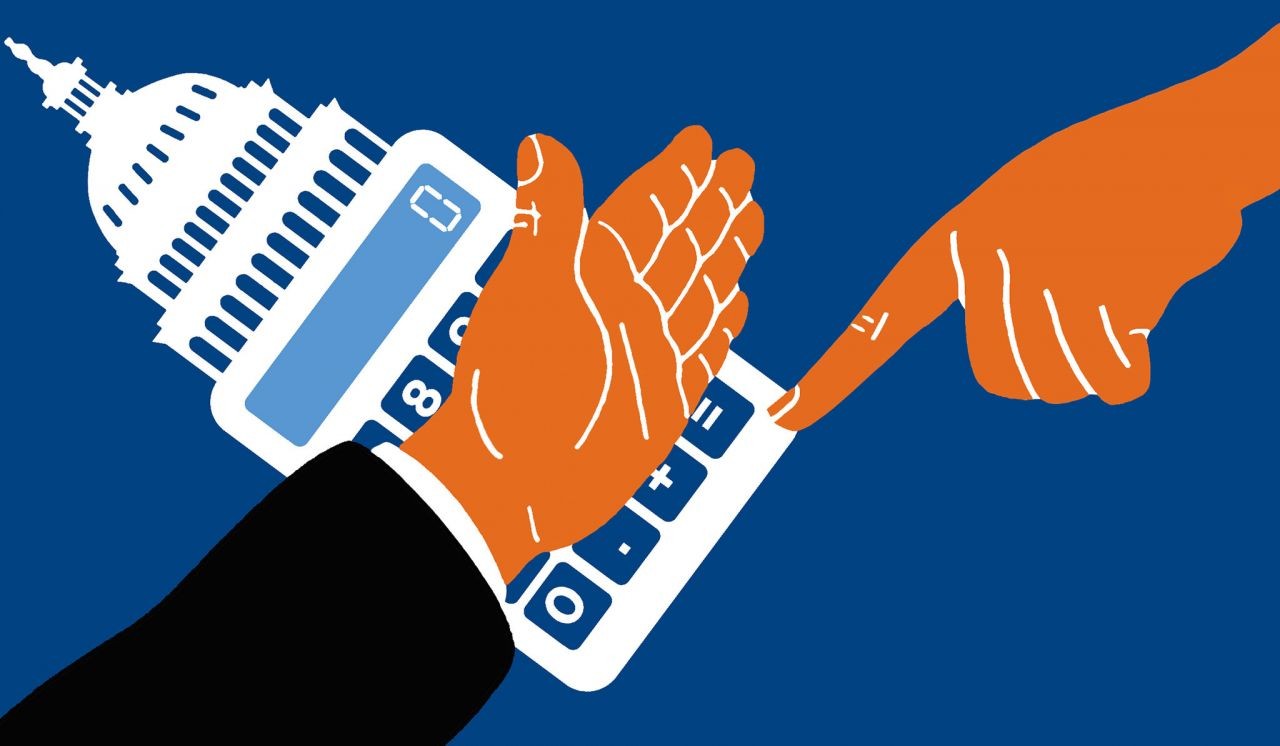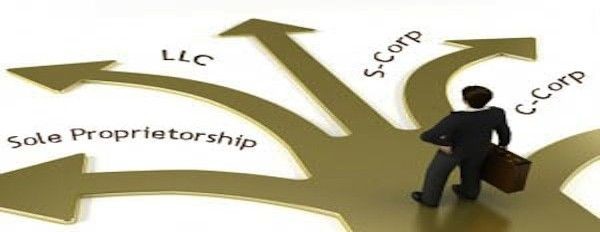TCJA
- Home
- Blog
- New Tax Law
- 2018 Tax Cuts & Jobs Act - Business Cuts
2018 Tax Cuts & Jobs Act - Business

Last year's sweeping tax overhaul, the Tax Cuts and Jobs Act of 2017 (TCJA), introduced a new tax break for owners of many pass-through businesses.
Individuals who are sole proprietors, partners in partnerships, members in LLCs taxed as partnerships (hereafter, "partners"), or shareholders in S corporations, may be able eligible to claim a deduction for qualified business income (QBI) under new Code Section 199A, beginning with the 2018 tax year. Trusts and estates are also eligible for the deduction.
The amount of the deduction (QBI deduction) is generally 20 percent of the taxpayer's qualifying business income from a qualified trade or business.
Example: In 2018, Joe receives $100,000 in salary from his job at XYZ Corporation and $50,000 of qualified business income from a side business that he runs as a sole proprietorship. Joe's QBI deduction for 2018 is $10,000 (20% of $50,000).
The QBI deduction is claimed by individual taxpayers on their personal tax returns. The deduction reduces taxable income, and is not used in computing adjusted gross income. Thus, it does not affect limitations based on adjusted gross income.
An explanation of the main rules for the QBI deduction follows.
Different Rules Apply at Different Levels of Taxable Income
One of the most important things to understand about the QBI deduction is that the rules that apply to individuals with taxable income below certain thresholds in a given tax year are simpler and more permissive than the ones that apply to income above those thresholds. For 2018, the threshold amount is $315,000 for married taxpayers filing a joint return, and $157,000 for all others.
There are actually only two rules that are waived for taxpayers with income below the threshold, but the impact can be profound. These are: (1) a rule that disqualifies income from a broad range of service businesses (referred to as "specified service trades or businesses") from the QBI deduction; and (2) a rule that limits the QBI deduction to a percentage of W-2 wages paid by a business. Both are discussed below.
Other rules, such as one preventing individuals from claiming the QBI deduction for employment income, apply to all taxpayers, regardless of their level of taxable income.
Qualified Trades or Businesses
The QBI deduction can only be claimed for income from a qualified trade or business.
A qualified trade or business means any trade or business other than:
(1) a specified service trade or business; or
(2) the trade or business of being an employee.
Specified service trade or business. A "specified service trade or business" is defined as any trade or business involving the performance of services in the fields of health, law, accounting, actuarial science, performing arts, consulting, athletics, financial services, brokerage services, including investing and investment management, trading, or dealing in securities, partnership interests, or commodities, and any trade or business where the principal asset of such trade or business is the reputation or skill of one or more of its employees. Engineering and architecture services are specifically excluded from the definition of a specified service trade or business.
Some of the categories and fields listed in the previous paragraph are fairly clear in their meaning. Others - such as "consulting" and "any trade or business where the principal asset of such trade or business is the reputation or skill of one or more of its employees" - are vague, and will be difficult to apply until the IRS provides guidance.
Special rule where taxpayer's income is below a specified threshold. The rule disqualifying specified service trades or businesses from being considered a qualified trade or business does not apply to individuals with taxable income of less than $157,500 ($315,000 for joint filers). After an individual reaches the threshold amount, the restriction is phased in over a range of $50,000 in taxable income ($100,000 for joint filers). If an individual's income falls within the range, he or she is allowed a partial deduction. Once the end of the range is reached, the deduction is completely disallowed.
Employees vs. independent contractors. The rule that taxpayers cannot claim a QBI deduction on their employment income is clear. But it isn't always clear when an individual is an employee versus being an independent contractor - and unlike employees, independent contractors are eligible for the QBI deduction. The more favorable treatment of independent contractors for purposes of the new deduction creates new opportunities, but also new pitfalls. If you're currently an employee and find yourself considering a switch to becoming an independent contractor, we should discuss the implications for both employment taxes and any potential QBI deduction.
Qualified Business Income
Qualified business income (QBI) means the net amount of qualified items of income, gain, deduction, and loss with respect to the qualified trade or business of the taxpayer.
Compensation paid to partners and S corporation shareholders. QBI does not include any amount paid by an S corporation that is treated as reasonable compensation of the taxpayer, or any guaranteed payment (or other payment) to a partner for services rendered with respect to the trade or business.
Example: Monica is a shareholder in, and sales manager for ABC, an S corporation that is a qualified trade or business. During the tax year, she receives reasonable compensation of $250,000 from ABC for her services as its sales manager. In addition, her pro rata share of ABC's net income, its only item of income or loss, is $175,000. Monica's qualified business income from ABC is $175,000. This is the amount eligible for the 20% QBI deduction.
'Domestic' requirement. Items are treated as qualified items of income, gain, deduction, and loss only to the extent they are effectively connected with the conduct of a trade or business within the United States.
Investment income. Qualified items do not include specified investment-related income, deductions, or losses, such as capital gains and losses, dividends and dividend equivalents, interest income other than that which is properly allocable to a trade or business, and similar items.
REIT dividends, cooperative dividends, and publicly traded partnership income. Qualified REIT dividends, qualified cooperative dividends, and qualified publicly traded partnership income are not included in the definition of QBI, but these items are eligible for a separately calculated 20 percent deduction.
Calculating the QBI Deduction for Each Trade or Business
The QBI deduction for a qualified trade or business is the lesser of:
(1) 20 percent of qualified business income; or
(2) the greater of: (a) 50 percent of the business's W-2 wages (applies to most businesses), or (b) an amount based on a more complex formula involving the business's W-2 wages and its depreciable property (see "Alternative limitation for rental real estate activities", below).
The amount in (2), above, is referred to as the "W-2 wage limitation".
Example: Susan, a single taxpayer, owns and operates a sole proprietorship that sells cupcakes. The cupcake business pays $100,000 in W-2 wages and has $350,000 in qualified business income. For the sake of simplicity, assume the business has no depreciable property, so the W-2 wage limitation is based on 50 percent of the business's W-2 wages (not the more complex formula involving wages and property). Susan's QBI deduction is $50,000, which is the lesser of (a) 20 percent of $350,000 in qualified business income ($70,000), or (b) 50 percent of $100,000 of W-2 wages ($50,000).
Alternative limitation for rental real estate activities. The more complex formula referred to in (2), above, which typically applies mainly to rental real estate activities, calculates the W-2 wage limitation by adding 25 percent of the business's W-2 wages to 2.5 percent of the original tax basis of the business's depreciable property that's still within its depreciable period at the end of the tax year.
Phase-in of W-2 wage limitation. The W-2 wage limitation does not apply to individuals with taxable income of less than $157,500 ($315,000 for joint filers). After an individual reaches the threshold amount, the W-2 limitation is phased in over a range of $50,000 in taxable income ($100,000 for joint filers).
Calculating the QBI deduction for multiple business. If you own more than one qualifying trade or business, the QBI deduction must be calculated separately for each business. This requirement can sometimes reduce the overall deduction by preventing W-2 wages or qualified property from one business from being used to increase the deductible amount from another business.
Loss carryovers. If the net amount of qualified business income from all qualified trades or businesses during the tax year is a loss, it is carried forward as a loss from a qualified trade or business in the next tax year (and reduces the qualified business income for that year).
Special Rules for Partnerships and S Corporations
In the case of a partnership or S corporation, the business income deduction applies at the partner or shareholder level. Each partner in a partnership takes into account the partner's allocable share of each qualified item of income, gain, deduction, and loss, and is treated as having W-2 wages for the taxable year equal to the partner's allocable share of W-2 wages of the partnership. Similarly, each shareholder in an S corporation takes into account the shareholder's pro rata share of each qualified item and W-2 wages.
Taxable Income Limitation on the QBI Deduction
If your taxable income (reduced by any income taxed at capital gain rates and before applying any QBI deduction) is less than your qualified business income, the QBI deduction is limited to 20 percent your taxable income (reduced by any income taxed at capital gain rates).
Example: Cynthia owns and operates LittleCo, a sole proprietorship that is a qualified trade or business. Cynthia has $100,000 in qualified business income from LittleCo, and no other items of income or loss. She has a total of $25,000 in above-the-line and itemized deductions. Her taxable income, prior to applying any QBI deduction, is $75,000. Cynthia's QBI deduction is $15,000, which is the lesser of her QBI deduction for LittleCo ($20,000 = 20% x $100,000 QBI) or 20 percent of her taxable income taxed at regular tax rates ($15,000 = 20% x $75,000 taxable income).
The effect of this limitation is to ensure that the 20 percent QBI deduction rate isn't applied to more income than the amount taxed at regular tax rates. The limitation mainly applies in situations where most or all of a taxpayer's income is qualified business income. Taxpayers with a significant amount of non-QBI income taxed at regular rates (e.g., salary or wage income, spousal salary or wage income, taxable interest income, etc.) will generally not see their QBI deduction reduced by the taxable income limitation.
Concluding Thoughts
As you can see, even the main rules for the QBI deduction are quite complicated.
This brief summary of the tax reform act is provided for your information. Any major financial decisions or tax-planning activities in light of this new legislation should be considered with the advice of a tax professional. Call 805.389.7300 if you have questions regarding your particular situation.











